Building a brand community isn’t about improving vanity metrics like engagement and follower count.
Or at least, it’s not just about that because it delivers real, measurable results.
According to a survey from Vanilla Forums, 58% of brands say their communities improve customer loyalty.
That’s a big deal, with research from KPMG revealing:
- 86% of loyal customers will recommend a company to friends and family
- 66% will write a positive online review after a positive experience
- 46% will remain loyal even after a negative experience
With that in mind, in this article, we’re going to take a look at 10 of our favorite brand community examples and the insights we can learn from them:
1. Sephora
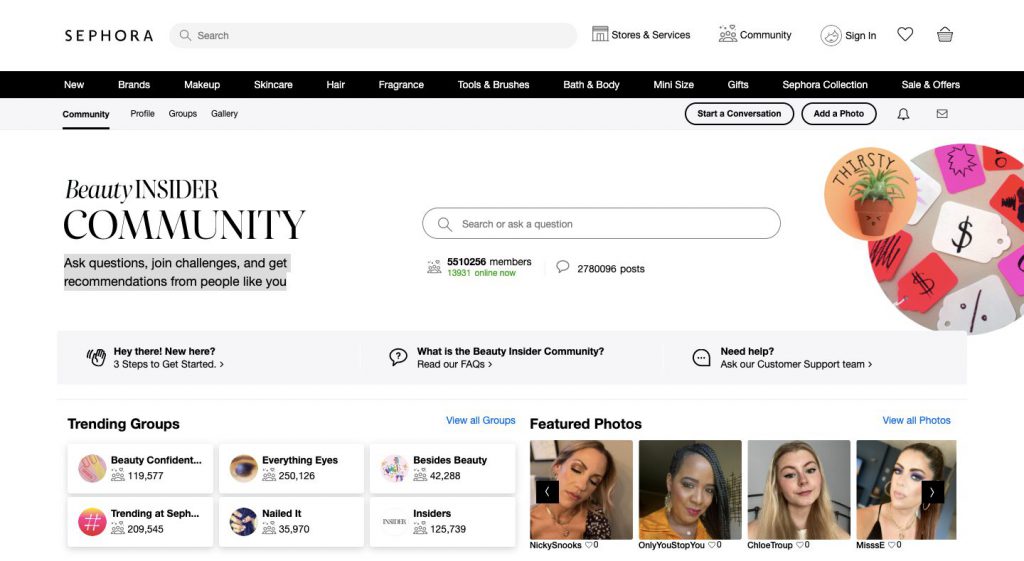
Multinational beauty retailer Sephora started Beauty Insider as a straightforward loyalty program in 2007 before pivoting to a full-blown community ten years later.
That decision looks to have paid off because Beauty Insider has approximately 5.5 million members today.
The online community allows Sephora customers to share their favorite looks and beauty tips, sample new products, ask questions, and generally connect with like-minded shoppers.
It comprises four main elements:
- Community Home: Sephora’s membership forum is a lively hub of constantly updated beauty advice, product recommendations, reviews, and general discussion.
- Groups: Adds Facebook Groups-like functionality to Beauty Insider, making it easier for users to find relevant content and conversations across 30 categories.
- Gallery: A space for users to post beauty photos and draw inspiration from other users’ makeup styles. Cleverly, it allows members to tag their products, helping people “shop the look.”
- Ratings and reviews: You can guess what lives here. Nine in ten consumers read reviews before making a purchase, so building review functionality into your community makes sense.
Why We Love It
The Groups feature allows Beauty Insider members to hone in on the content that interests them most.
That’s a smart move on Sephora’s part. After all, if you only ever see content that genuinely interests you, you’re more likely to be engaged and keep coming back for me.
2. Rust-Oleum
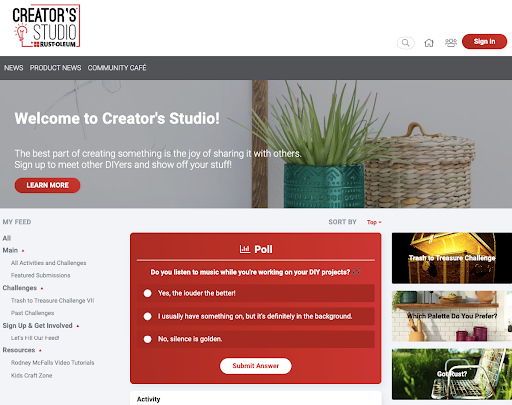
For the uninitiated, Rust-Oleum sells protective paints and coatings for things like wood, concrete, and metal.
Maybe you disagree, but for most, that doesn’t particularly interesting.
So how has the company managed to build an engaged brand community?
The answer lies not in the specific products Rust-Oleum sells but in the reasons consumers buy those products: to support their DIY arts-and-crafts projects.
Creator’s Studio is a space for members to share details about their latest creations, seek feedback, and ask for advice when they hit problems.
Creator’s Studio is very much a supportive environment. Users are encouraged to be respectful and buy into the motto: “No idea is born perfect.”
Why We Love It
Rust-Oleum publishes regular member interviews highlighting its most dedicated and loyal community users.

Posts like this make it feel like the company truly values its members, which is a great way to drive loyalty and engagement with Creator’s Studio.
3. Traditional Medicinals
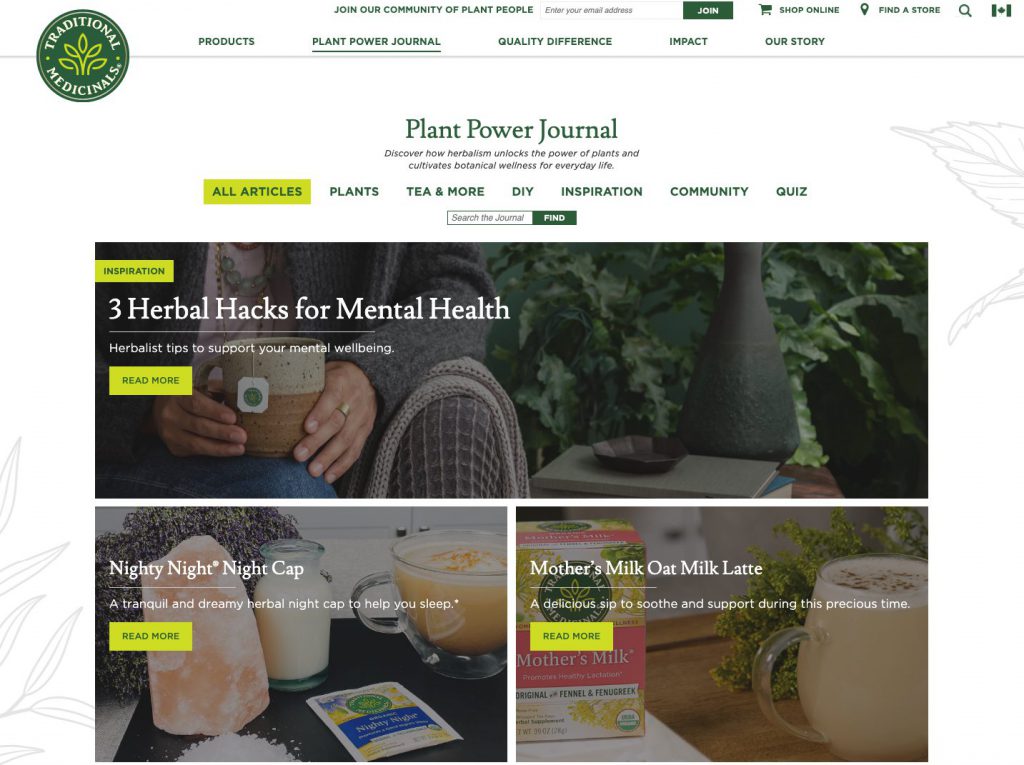
Herbal tea company Traditional Medicinals has built a brand community around its online publication, Plant Power Journal.
The journal is a treasure trove of content on all things herbal tea-related, from product news to recipes (green tea match ice cream, anyone?).
Why We Love It
Plant Power Journal is more of a content marketing exercise than a “true” community with all the associated features and functionality, like a forum or specific member benefits.
Yet it still works thanks to Traditional Medicinals’ focus on consumer reviews.
Community members are encouraged to share their opinions about the brand’s various herbal tea products, and those reviews — good and bad — are given a prominent position on product pages:
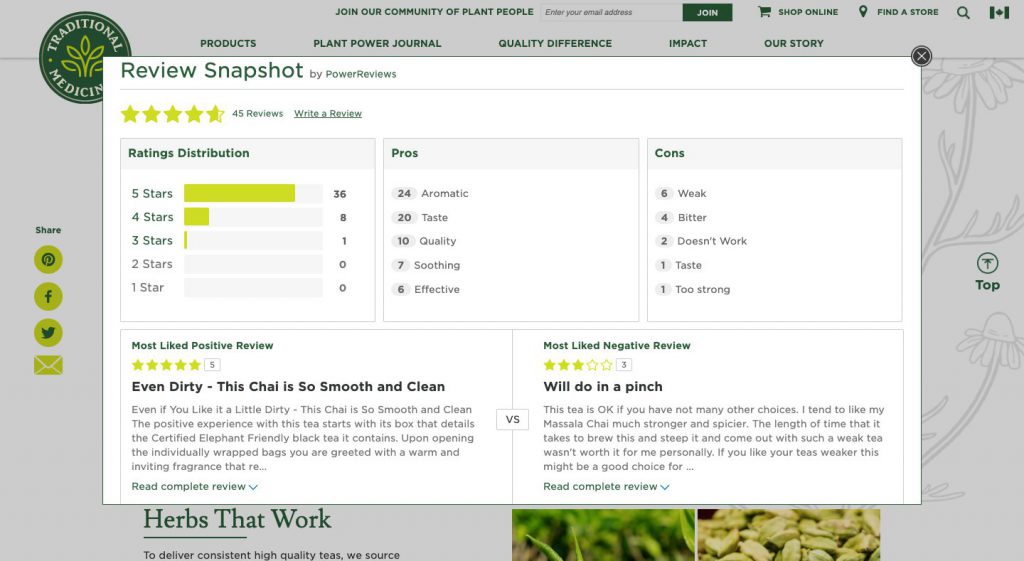
This is a fantastic way to leverage the power of social proof.
By making it simple for customers to find out what other shoppers think about its products, Traditional Medicinals drives sales without having to “close the deal” itself.
4. Salesforce
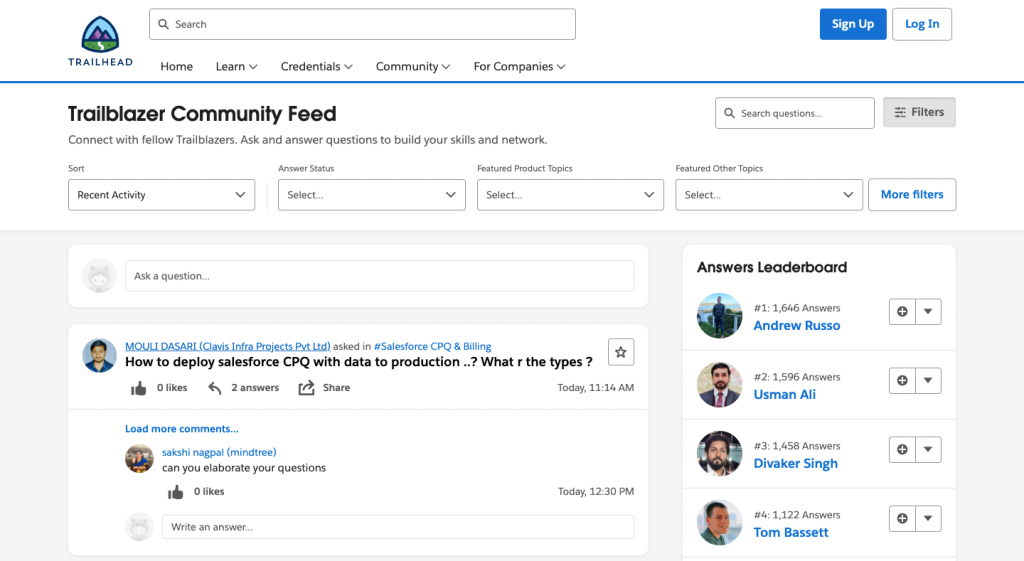
You’ve almost certainly heard of Salesforce, one of the world’s most popular customer relationship management platforms.
But you might not have heard of Trailhead, the company’s brand community comprising more than 1,300 groups across 90 countries.
Trailhead members — known as Trailblazers — are encouraged to collaborate and meet fellow users based on shared interests, job roles, and locations.
However, Trailhead is much more than a network space. It also comprises an online learning element that helps people boost their Salesforce skills and overcome common challenges, and provides a platform for members to share their knowledge and experience.
It’s popular, with 81% of Trailhead users saying that engaging with the community makes them more productive and 93% reporting that it encourages innovation.
Why We Love It
Trailhead demonstrates how brands can use gamification to drive community engagement.
It runs regular Quests that offer prizes — like swag and community badges — to people who learn specific skills.
Quests require different levels of prior knowledge, making them an effective tool for engaging and motivating beginners, experienced Trailblazers, and everyone in between.
5. Oystercatchers
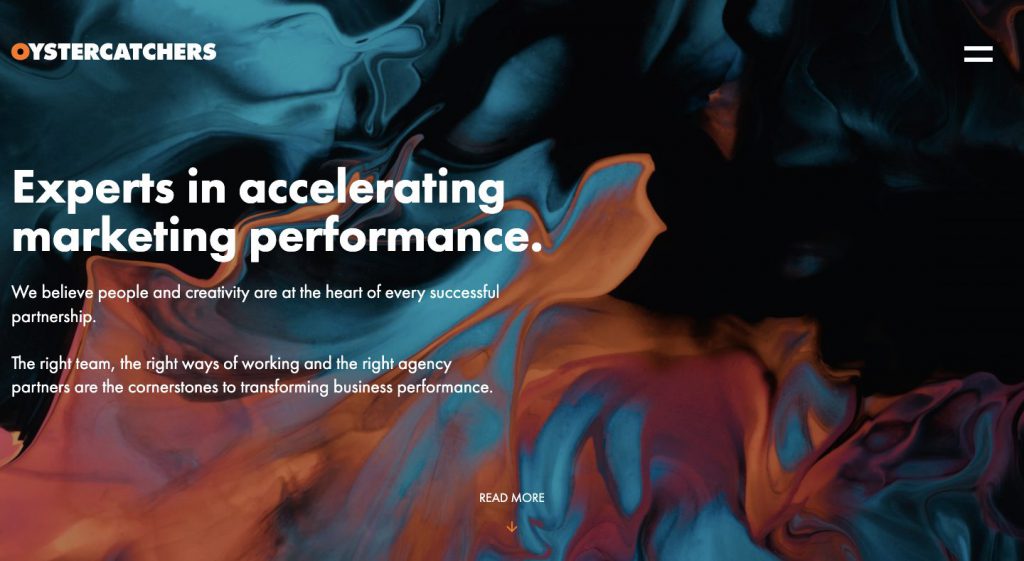
Oystercatchers is a go-between for marketing agencies and brands.
As you can likely imagine, that makes it a perfect candidate for a brand community that brings together skills and knowledge from all areas of the marketing world.
This is precisely where The Oystercatchers Club comes in.
Created in 2011 as a way for clients and agencies to share ideas and best practices, it’s become one of the industry’s most popular leadership forums.
Why We Love It
The Oystercatchers Club shows that building a brand community doesn’t need to be an online-only activity, even in a post-pandemic world.
It hosts one flagship event per quarter, with half of the attendees drawn from senior clients and the other half from agencies.
The opportunity to meet and debate hot marketing topics with fellow leaders in an informal in-person environment has been a major draw, demonstrating how physical events can make communities feel more “real” and increase participation.
6. Kinaxis
Kinaxis differs slightly from most of this article’s other brand community examples.
The majority of those examples are public-facing, B2C-oriented forums.
As a supply chain software provider, Kinaxis is very much in the B2B world, and it’s opted to create a closed brand community — one that’s only open to Kinaxis customers and partners.
That means users get to share insights and best practices, safe in the knowledge that only approved eyes will see their content.
Not only does it allow Kinaxis to offer support and product knowledge to customers, but it also builds loyalty through its networking functionality, which gives users another reason to engage with its platform.
Why We Love It
Kinaxis proves that building a brand community isn’t just about reaching new audiences.
By making its community a closed shop, the company uses the platform to drive engagement among existing customers, which can be a valuable tactic for upsells and cross-selling.
7. Instant Pot
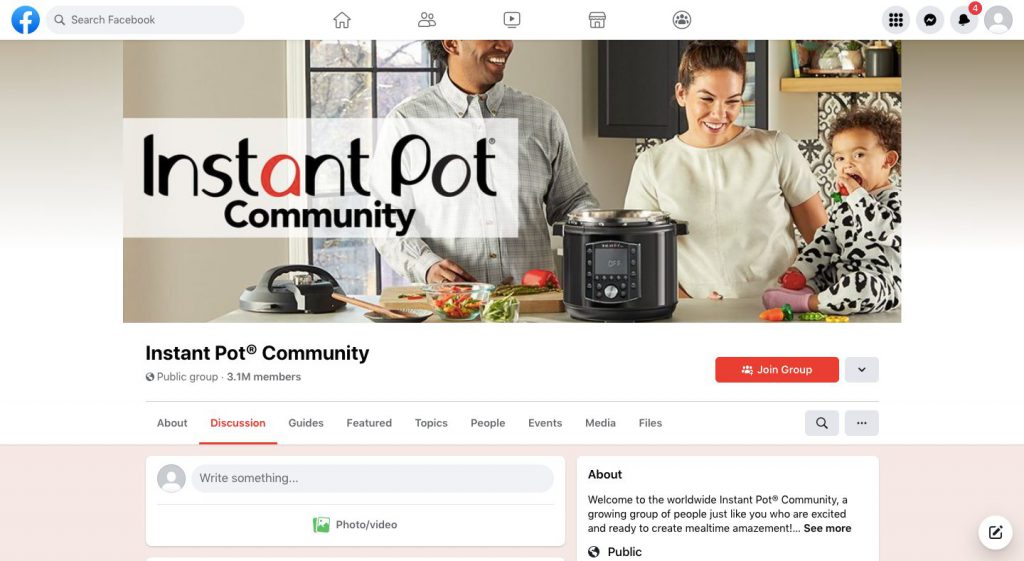
Instant Pot is a range of at-home pressure cookers owned by Canadian kitchen appliances company Instant Brands.
The official Instant Pot Facebook Group has amassed 3.1 million members at the time of writing.
Open to anyone who owns an Instant Pot and generally loves cooking, the community allows members to share their favorite recipes, ask questions, and get cooking inspiration.
Why We Love It
It’s easy to imagine that having a brand community requires a ton of effort on your part, from creating interesting articles and videos to leading the conversation with regular forum and social media posts.
Instant Pot shows that’s simply not the case because its Facebook Group is 100% reliant on user-generated content (UGC).
To be clear, that’s not because Instant Pot simply can’t be bothered to get involved. Quite the opposite.
In reality, UGC is one of the most persuasive content formats, with four-fifths of consumers saying it highly influences their purchase decisions.
In contrast, just one in eight say the same about brand-created content.
So if you can encourage community members to create a ton of UGC, you’ll be in a great position to boost sales.
8. Inkbox
View this post on Instagram
If you’ve spent time on Instagram (or any other visual social media platform), you’ll know tattoos are a big deal.
Search interest in tattoos soared in the early to mid-2010s, and while it’s tailed off a little since then, tattoos are still a hot topic.
This brings us to temporary tattoo brand Inkbox, which has created an online brand community based around a single Instagram hashtag: #tattoosfornow.
Why We Love It
Inkbox demonstrates the power of social media as a tool for building a loyal and engaged brand community.
Members have shared almost 6,000 photos using the community hashtag, with Inkbox highlighting its favorite posts via its Instagram profile.
This is a quick and easy way to create a brand community: there is no need to build a dedicated forum, launch a microsite, or run networking events. Just get customers to create content and share the best examples. Simple!
9. Behance
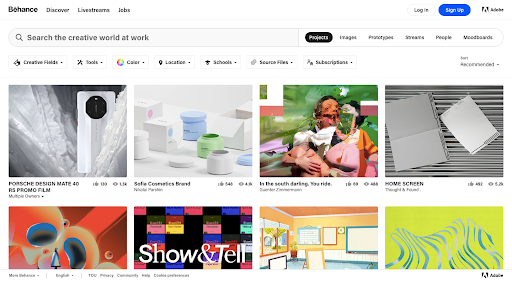
Adobe’s Behance is primarily a platform that allows creatives to demonstrate their work and reach out to like-minded professionals.
However, it takes things a step further with the addition of live-streamed tutorials, which allow members to acquire new skills across multiple creative categories, from graphic design to photography and illustration.
Members can ask questions at any point in a live stream, creating a truly collaborative and interactive learning experience.
Why We Love It
Live-streaming functionality is undeniably useful, but in our view, the best thing about Behance is the jobs section.
This transforms the platform from a space for learning and sharing to one that could potentially help members land their dream roles.
That’s a pretty compelling reason to keep people coming back.
10. Peloton
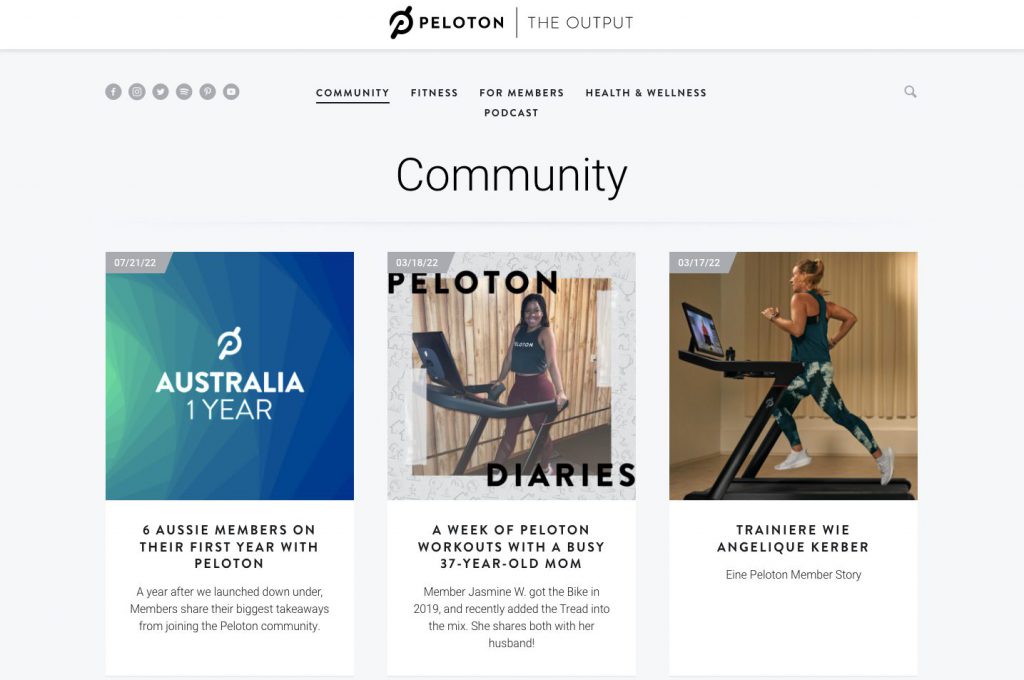
If we know one thing about Peloton owners, they love talking about owning Pelotons.
So it’s no surprise that the official Peloton Facebook Group has about 470,000 members.
The brand community allows customers to connect with fellow Peloton customers, keep up to date with company announcements, and learn about the latest product features before anyone else.
But it’s not all about the Facebook Group.
Peloton also has a dedicated subcategory on its blog that shares inspirational content from community members, positioning them at the forefront of the Peloton story.
Why We Love It
It’s common to think of a brand community as something based around a single forum or social platform, but Peloton shows that doesn’t have to be the case.
Despite existing across two platforms, the Peloton community consistently prioritizes user stories and helps people make the most of Peloton products.
Thriving communities prioritize their audiences and the platform (or platforms) they naturally enjoy, rather than expecting them to engage with an unfamiliar environment.
Want to take your social media strategy to the next level? Sign up for our next social media strategy conference!


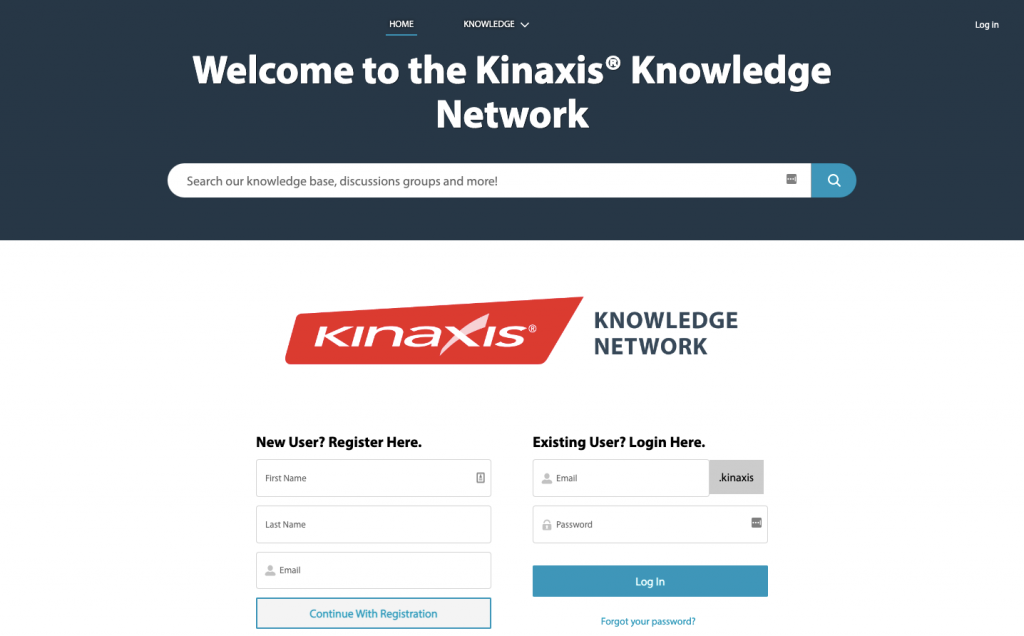 Image source
Image source






